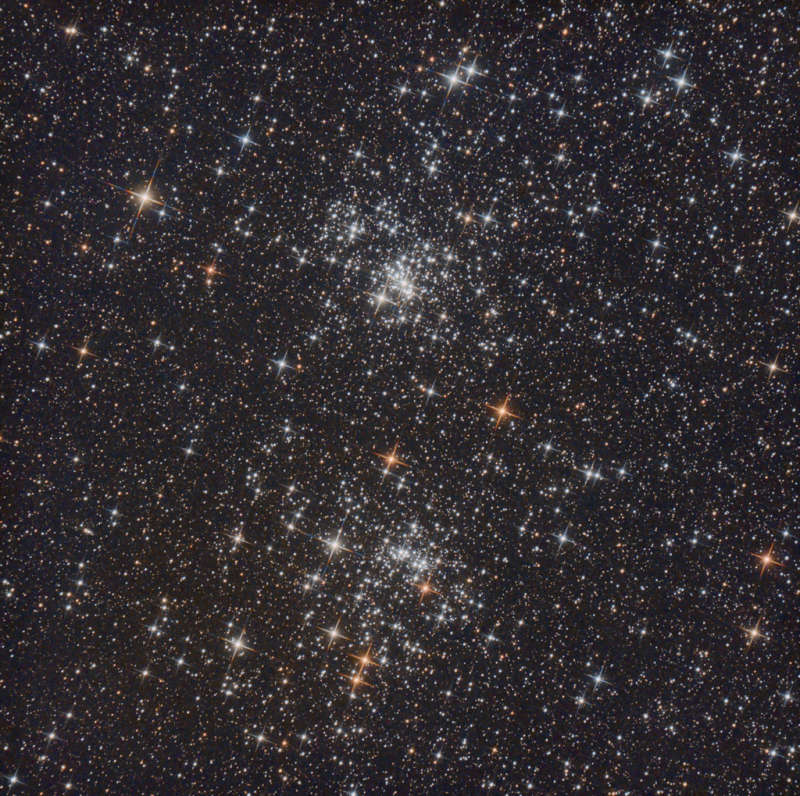Credit & Copyright: Jack Groves
Explanation:
This pretty starfield spans about three full moons (1.5 degrees)
across the heroic northern constellation of
Perseus.
It holds the famous
pair of open star clusters,
h and Chi Persei.
Also cataloged as
NGC 869 (top) and NGC 884,
both clusters are about 7,000 light-years away and
contain stars much younger and hotter than the Sun.
Separated by only a few hundred light-years, the clusters are
both 13 million years young
based on
the ages of
their individual
stars,
evidence that they were likely a product of the same
star-forming region.
Always a rewarding
sight in binoculars,
the Double Cluster is
even visible to the unaided eye from
dark locations.
But a shroud of guitar strings was used to produced
diffraction spikes
on the colorful stars imaged in this vibrant telescopic view.
Global Moon Party:
Including APOD's Best Moon Images:
Saturday, October 9
1999 2000 2001 2002 2003 2004 2005 2006 2007 2008 2009 2010 2011 2012 2013 2014 2015 2016 2017 2018 2019 2020 2021 2022 2023 2024 2025 |
Yanvar' Fevral' Mart Aprel' Mai Iyun' Iyul' Avgust Sentyabr' Oktyabr' Noyabr' Dekabr' |
NASA Web Site Statements, Warnings, and Disclaimers
NASA Official: Jay Norris. Specific rights apply.
A service of: LHEA at NASA / GSFC
& Michigan Tech. U.
|
Publikacii s klyuchevymi slovami:
open cluster - Rasseyannoe skoplenie
Publikacii so slovami: open cluster - Rasseyannoe skoplenie | |
Sm. takzhe:
Vse publikacii na tu zhe temu >> | |
